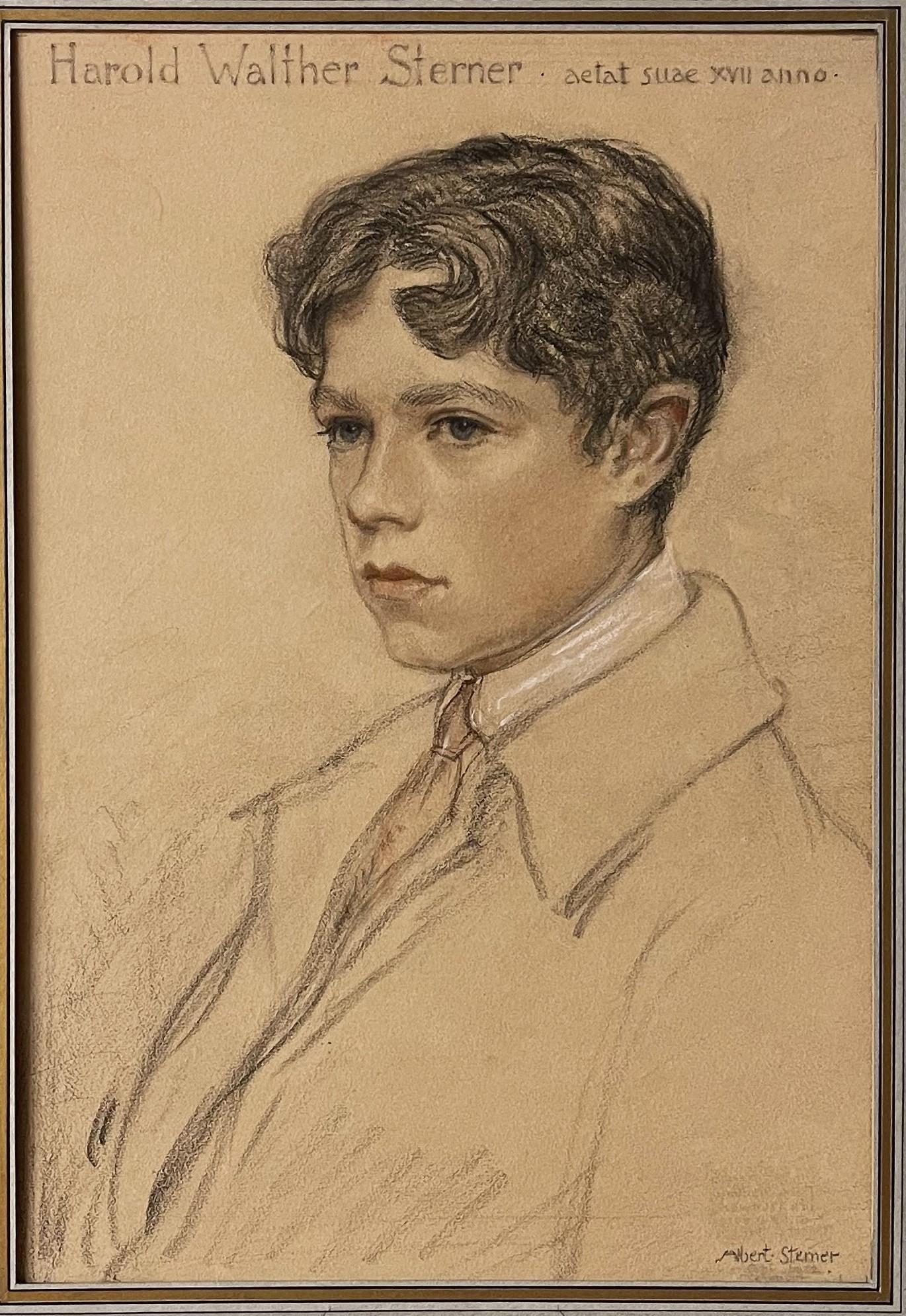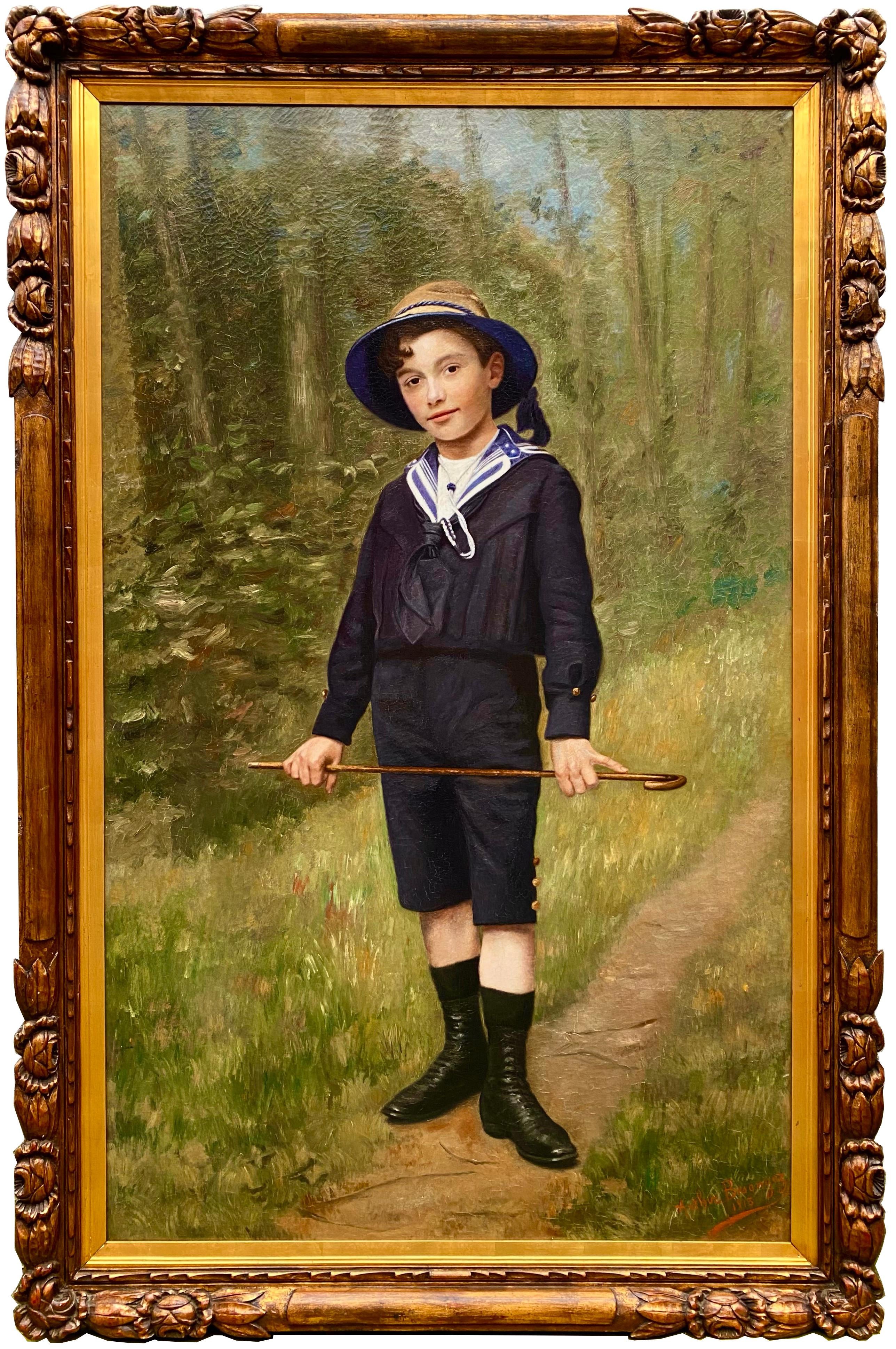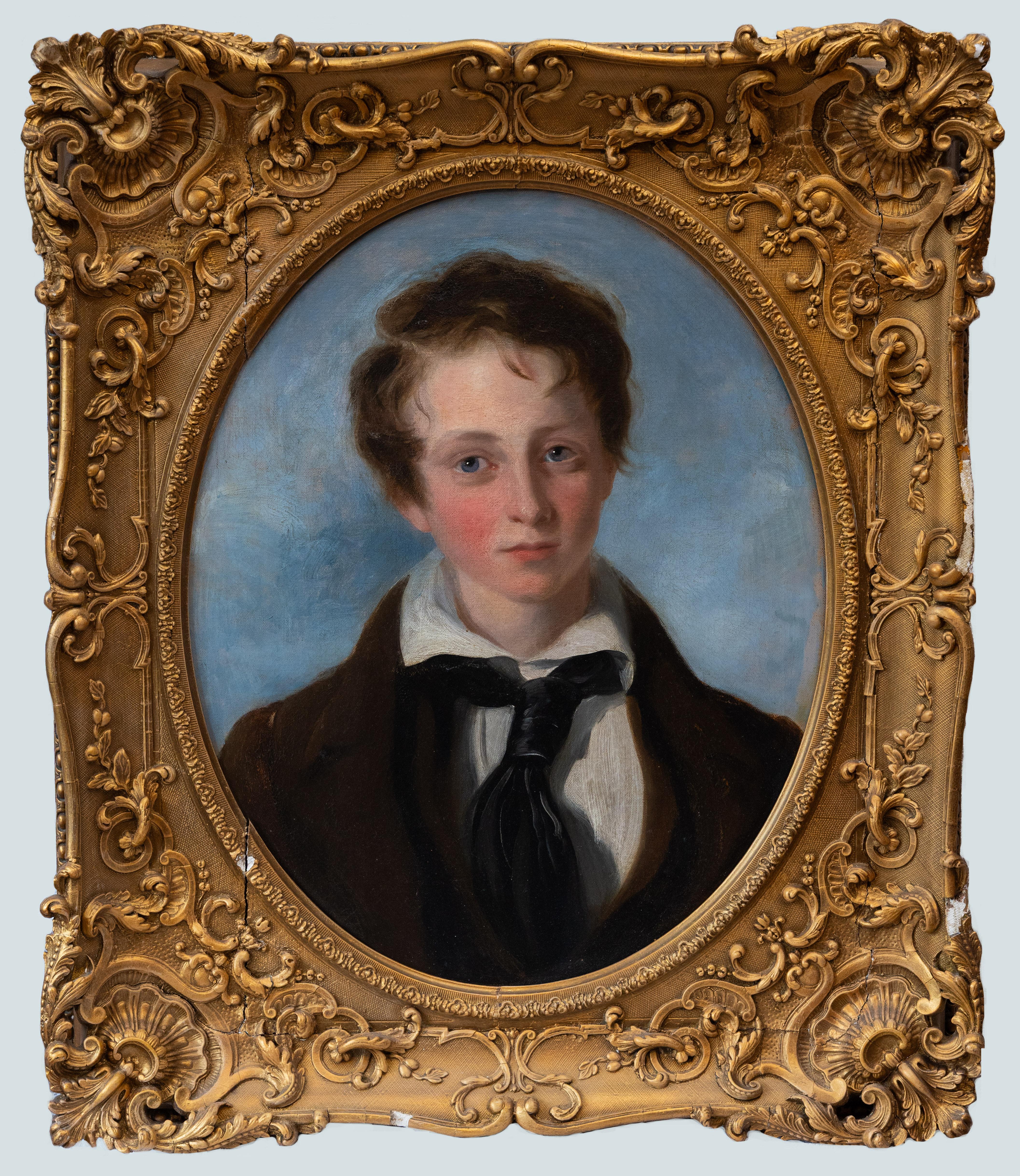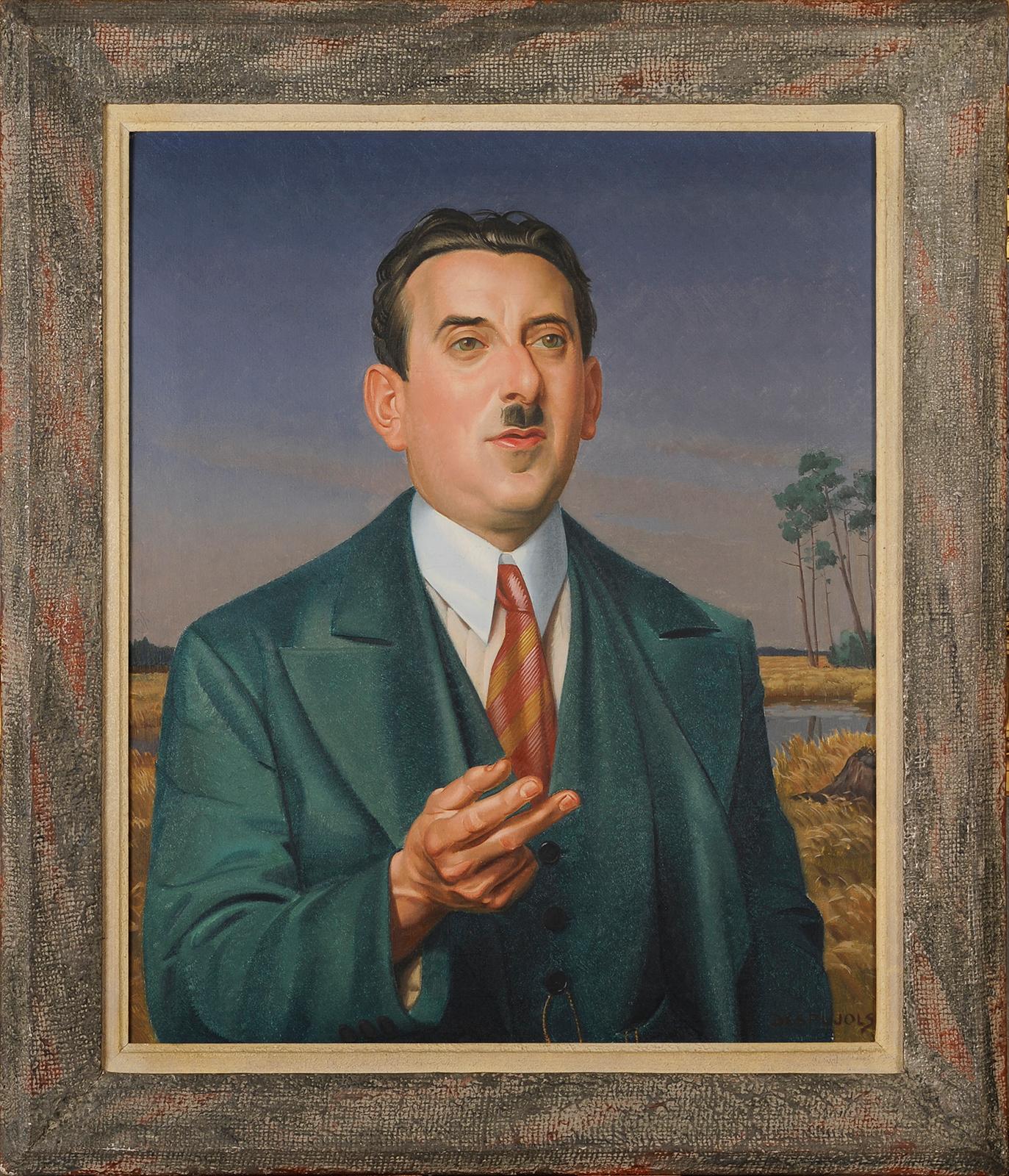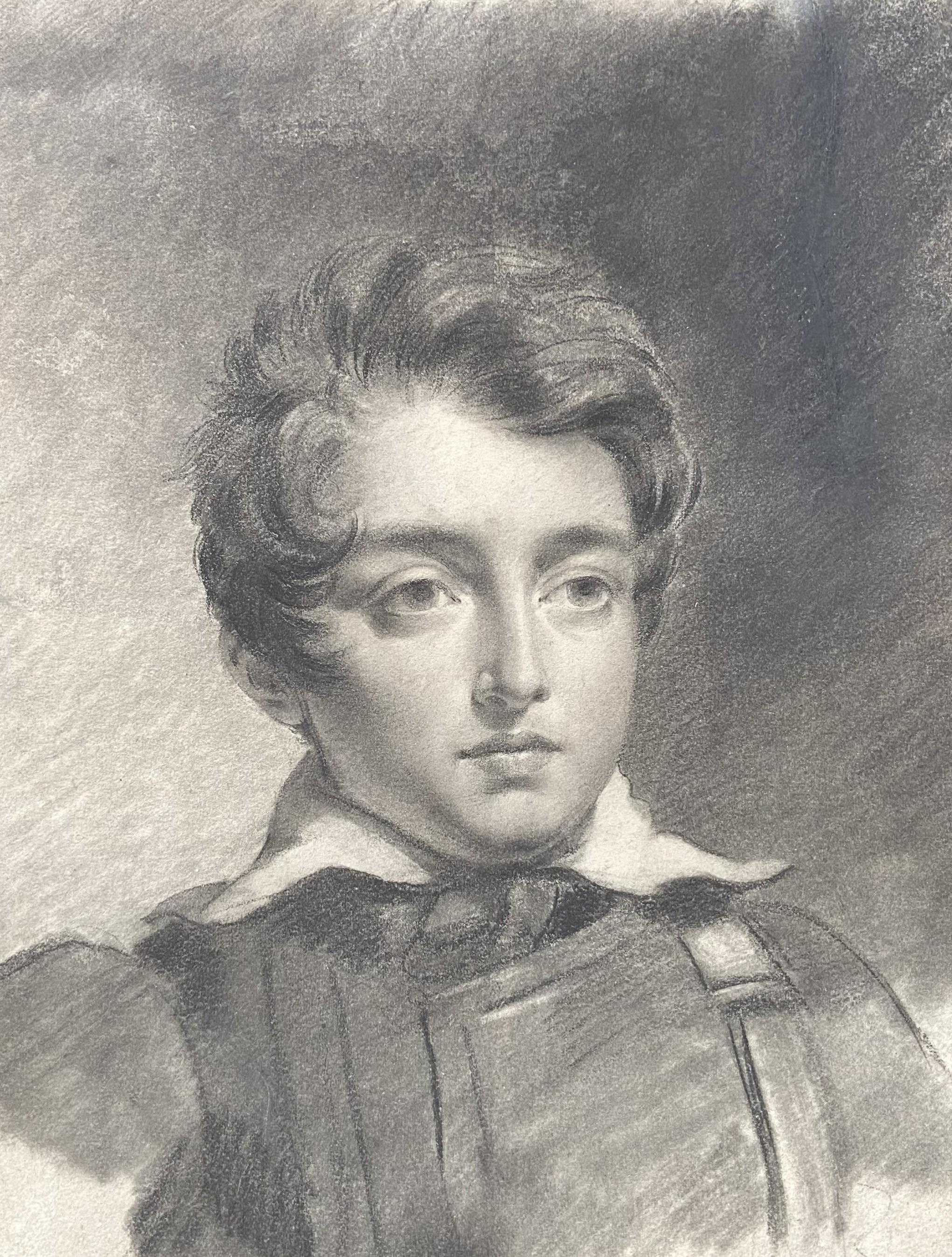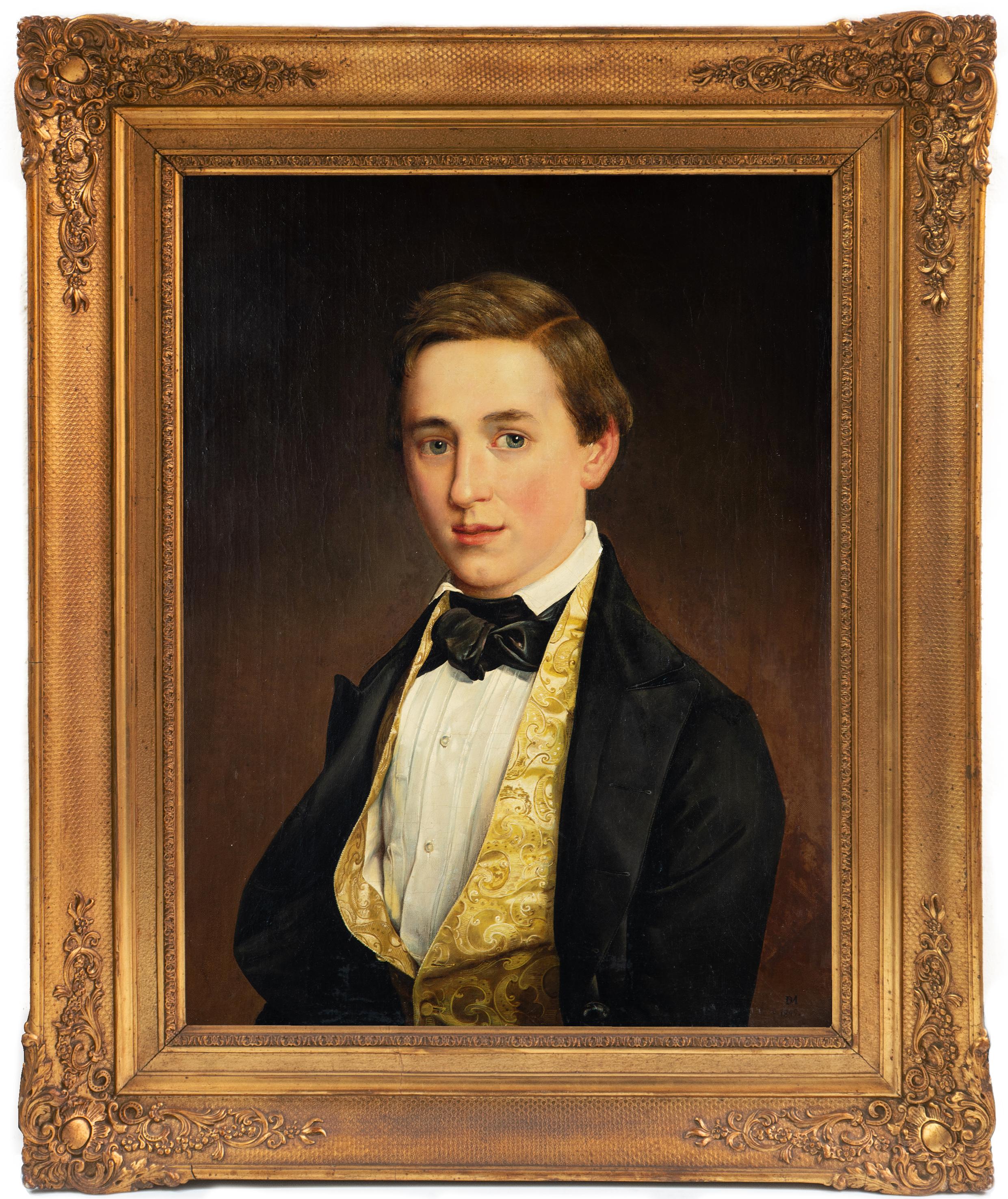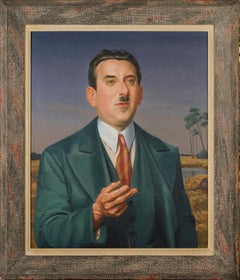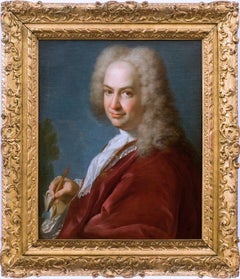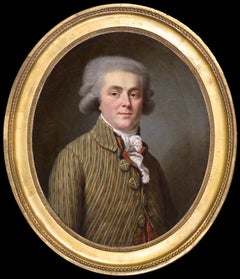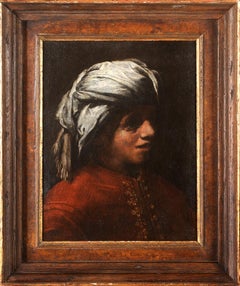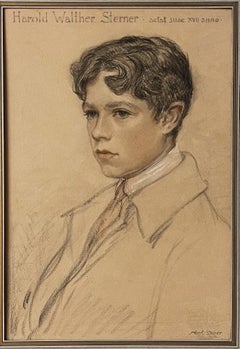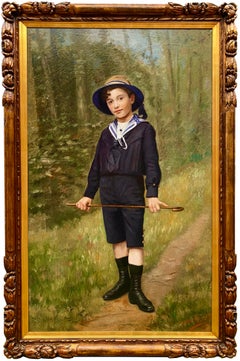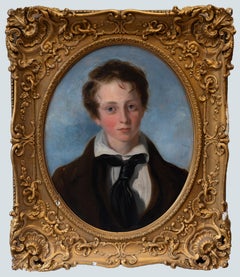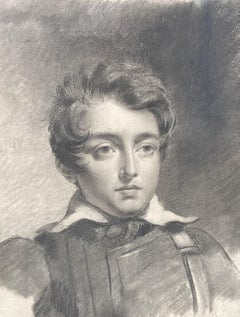Items Similar to Portrait of young man - The artist's son
Want more images or videos?
Request additional images or videos from the seller
1 of 9
Auguste-Joseph DeléclusePortrait of young man - The artist's son1903
1903
$18,502.89
£13,730.11
€15,500
CA$25,806.17
A$27,954.47
CHF 14,719.16
MX$339,309.47
NOK 183,566.46
SEK 173,557.78
DKK 118,026.23
About the Item
Auguste-Joseph Delécluse
(Roubaix 1855 - Paris 1928)
Portrait of the artist's son, Eugène Delécluse
Oil on canvas
H. 98 cm; W. 116 cm
Signed lower right
1903
Exhibition: 1903, Salon of the Société Nationale des Beaux-Arts, booklet no. 408, titled Portrait of My Son
A native of Roubaix, Auguste Delécluse trained in the Parisian studios of Carolus-Duran, Weerts, and Delance, whose apprenticeship tradition he would continue thereafter. Primarily a portrait painter, he presented his first painting at the Salon at the age of 25 and received a distinction ten years later. If Delécluse's name was known in the artistic world of the 1880s-1920s, it was thanks to the Academy he founded in Montparnasse, bearing his surname, where he taught alongside his former master, Delance. Many women were among the students of this Parisian institution, which closed around the Great War.
In 1903, Auguste Delecluse presented five works at the Salon of the Société Nationale des Beaux-Arts, including our beautiful format, depicting his son Eugène, then aged 21. Auguste had already exhibited paintings featuring his son as their subject: a portrait of his wife and son at the Salon des Artistes Français in 1888 (number 769 in the booklet), a portrait of his son at the Salon de la Société Nationale des Beaux-Arts in 1893 (number 325 in the booklet).
Seated at his work table in a studio, the young Eugène poses cross-legged, in an elegantly relaxed pose, wearing the large apron covering his suit, pencil in hand. His face, illuminated by a ray of light, as do the two touches of red on the tie and binding, subtly enhance the ambient darkness of the room. In the very sober background, a pot of brushes resting on a shelf stands out.
In that same year, 1903, Eugène participated for the first time in a Salon, the Salon des Artistes Français, with a drawing, and our painting perhaps reflects the father's pride in marking this official recognition of his son. The two artists resided at the same address, 84 rue Notre-Dame des Champs in Paris, which is also the address of the Académie Delécluse. Was the portrait thus painted in one of the rooms of the Academy, or in the family apartment, as the presence of the Henri II-style chair might suggest?
Regarding the critical success of the work, Le Journal des Artistes praised the father's work as "... a tall, beardless young man, seated at his work table, wearing a smock [...] like an aspiring artist, a strikingly realistic portrait, also executed in the best style."
La Liberté is no less complimentary: "Of Mr. Auguste Delecluse, two excellent portraits, one of which, that of his son, is painted in the most frank and accurate manner: one of the good portraits of the Salon." »
Finally, L’Art: revue mensuel illustrée soberly refers to a “Good Portrait of my son by Mr. Auguste Delécluse.”
Despite this excellent reception, it seems that the painting did not find a buyer at the Salon; the stretcher bears a handwritten inscription in English, “Portrait of my son,” by Auguste Delécluse. Delécluse made frequent visits to England, and it is possible that he brought the portrait with him to try to sell it to a British clientele.
Eugène Delécluse (Paris, 1882 – Villiers le Bel, 1972), a student of his father, Delance, and Fernand Cormon, pursued a respectable career as a painter, illustrator, and engraver, regularly participating in the Salon from 1907 onward. He produced mainly landscapes in a Post-Impressionist style, with many Breton subjects, but also Mediterranean, Parisian, and English ones.
- Creator:Auguste-Joseph Delécluse (1855 - 1928, French)
- Creation Year:1903
- Dimensions:Height: 38.59 in (98 cm)Width: 45.67 in (116 cm)
- Medium:
- Movement & Style:
- Period:
- Condition:
- Gallery Location:BELEYMAS, FR
- Reference Number:1stDibs: LU1857216359692
About the Seller
3.0
Vetted Professional Seller
Every seller passes strict standards for authenticity and reliability
Established in 2017
1stDibs seller since 2022
5 sales on 1stDibs
Typical response time: 1 to 2 days
- ShippingRetrieving quote...Shipping from: BELEYMAS, France
- Return Policy
Authenticity Guarantee
In the unlikely event there’s an issue with an item’s authenticity, contact us within 1 year for a full refund. DetailsMoney-Back Guarantee
If your item is not as described, is damaged in transit, or does not arrive, contact us within 7 days for a full refund. Details24-Hour Cancellation
You have a 24-hour grace period in which to reconsider your purchase, with no questions asked.Vetted Professional Sellers
Our world-class sellers must adhere to strict standards for service and quality, maintaining the integrity of our listings.Price-Match Guarantee
If you find that a seller listed the same item for a lower price elsewhere, we’ll match it.Trusted Global Delivery
Our best-in-class carrier network provides specialized shipping options worldwide, including custom delivery.More From This Seller
View AllPortrait of a French man
By Jean Despujols
Located in BELEYMAS, FR
Jean DESPUJOLS
(Salles 1886 – Shreveport 1965)
Portrait of a Henri Martin, mayor of Saint Médard en Jalles (Gironde)
Oil on canvas
H. 75 cm; L. 60 cm
Signed lower right
around 1920/2...
Category
1920s French School Portrait Paintings
Materials
Canvas, Oil
Presumed artist self-portrait
Located in BELEYMAS, FR
Louis-Gabriel BLANCHET
(Versailles, 1701 – Rome, 1772)
Presumed self-portrait of the artist
Oil on canvas
H. 73 cm; W. 60 cm
Circa 1730
Originally presented in a Restoration period frame with a "Mignard" cartouche, this beautiful painting initially appeared to us as a work from northern Italy. However, it exuded a rather French form of refinement, suggesting that its artist may have assimilated a dual influence from both sides of the Alps.
We thank our colleague and friend Philippe Mendès for spontaneously and judiciously "bringing out" the name of Louis-Gabriel Blanchet, a Romanized French portraitist, whose spirit and stylistic characteristics we clearly recognize here.
Blanchet's "French" years, before his final departure for Rome in 1728, following his winning of the second Grand Prix for painting after Subleyras in 1727, are extremely poorly documented. His father, Gabriel, was valet to Blouin, himself Louis XIV's first valet at the time. According to Thierry Lefrançois, Blanchet was one of the few students of Nicolas Bertin (1667-1736), whose studio he is said to have joined in the early 1720s. At a baptism on March 24, 1724, where he was godfather, he is mentioned as a painter in the picture store of the Duke of Antin, the director of buildings between 1708 and 1736. At this time, he was probably already married to Jeanne Quément, with whom he had a daughter also named Jeanne, who would marry Nicolas Aviet, the son of a valet in the queen's wardrobe, in Versailles in 1738.
When Blanchet arrived in Rome in October 1728, he was accompanied by Subleyras, Trémolières, and Slodtz. He enjoyed the goodwill of Vleughels, the director of the Académie de France, which had been based at the Palazzo Mancini since 1725, even though the latter was not always kind to our resident. From 1732, he was under the protection of the Duke of Saint-Aignan when he took up his post as ambassador to Rome. Along with Slodtz and Subleyras, they formed a trio of friends, joined by Joseph Vernet shortly after his arrival in Rome in 1734. Slodtz and Blanchet, on the occasion of Subleyras's marriage in 1739, were there to attest that their friend was not bound by any marital commitment, and Blanchet was a witness at Vernet's wedding in 1745.
It is most likely from these early years in Rome that our portrait of the artist dates, the expression and turn of his face irresistibly reminiscent of a self-portrait. The still relatively youthful features may correspond to Blanchet's thirty-something years, and the fluffy wig was still fashionable at this time.
The painting fits well with the depiction of a young painter wanting to display both the beginnings of success and a certain simplicity or restraint. A slight smile expresses a form of assurance in this man with a gentle, sincere gaze and a face radiating a keen sense of wit. We find here the air of intimacy present in almost all of Blanchet's portraits, even those from the 1750s and 1760s, as well as an almost complicity with the viewer. The spirit of the painting is quite close to that of the presumed portrait of Bouchardon (painted around 1730) and the portrait of Pannini, painted in 1736, but it possesses a more natural quality, notably thanks to the absence of decorum. Our work exhibits the characteristics of Blanchet's paintings: elegance, luminosity (especially in the whites), vibrant and refined colors (here, the harmony of the garnet of the garment and the slate blue of the background, whose uniformity is tempered by a very sketched landscape and a grove of greenery), light complexions, rather rosy cheekbones, often full lips, and rather tight framing.
According to the Academy's rules, Blanchet's stay should have ended in the spring of 1732, but, for reasons unknown, he remained in the Eternal City until his death, as did his friend Subleyras, with whom he shared accommodation until the late 1730s. The latter regularly called upon him to collaborate on his paintings, such as The Meal at Simon's. Through Saint-Aignan's intervention, Blanchet was employed in the late 1730s by the Stuart princely family, then exiled in Italy. He notably produced copies (now lost) after Liotard of the portraits of Charles Edward and Henry Benedict, the sons of James III Stuart. The latter also commissioned three other portraits (now in the National Portrait Gallery in London), whose more formal character contrasts with the intimate spirit of Blanchet's portraits. Blanchet frequented English painters, such as the landscape painter Richard Wilson, and studied with the Scottish portraitist Katherine Read...
Category
1730s French School Portrait Paintings
Materials
Oil, Canvas
Portrait of a man during French Revolution
Located in BELEYMAS, FR
Antoine VESTIER, attributed to
(Avallon, 1740 - Paris, 1824)
Portrait of a man under the Revolution
Oil on canvas
H. 46 cm; L. 37 cm
Circa 1793-95
This beautiful unsigned portrait i...
Category
1790s French School Figurative Paintings
Materials
Canvas, Oil
Portrait of a young man with a turban
Located in BELEYMAS, FR
Circle of Adam de Coster
(Mechelen 1586 – Antwerp 1643)
Portrait of a Young Man with a Turban, Dressed in Oriental Style
Oil on canvas
H. 43 cm ; W. 33 cm
Unsigned
This portrait of ...
Category
1620s Flemish School Portrait Paintings
Materials
Oil, Canvas
The rest
Located in BELEYMAS, FR
Gustav VERMEHREN
(Copenhagen 1863 – Copenhagen 1931)
Rest
Oil on canvas
H. 72 cm; W. 79 cm
Signed lower right and dated 1911 (twice)
Exhibition: 1963, F...
Category
1910s French School Landscape Paintings
Materials
Canvas, Oil
Portrait of young women with a white bow
By Charles Herrmann-Léon 1
Located in BELEYMAS, FR
Charles HERRMANN-LÉON (born Léon Charles Sigismond HERRMANN)
(Le Havre 1838 - Paris 1908)
Portrait of a Young Woman
Oil on canvas
H. 54 cm; W. 41 cm
Signed and dated upper right - 18...
Category
1870s French School Portrait Paintings
Materials
Canvas, Oil
You May Also Like
PORTRAIT OF HAROLD STERNER
Located in Portland, ME
Sterner, Albert (American. 1863-1946). PORTRAIT OF HAROLD STERNER. Charcoal and pastel on paper, not dated, but 1912, as the subject is stated to be aged 17. Signed, lower right. 16 1/2 x 11 1/4 inches, framed to 26 1/8 x 20 1/8 inches. In very good condition.
Albert Sterner was born in England, and studied in Paris. He worked as a magazine illustrator, but is best known for his paintings and prints.
Harold Sterner (American, 1895-1976). Architect, painter; New York, N.Y. Born 1895, died 1976...
Category
1910s Portrait Drawings and Watercolors
Materials
Charcoal, Pastel
'Portrait of a Boy' by Arthur Bésengez, 1867 - 1947, Belgian Painter
Located in Knokke, BE
Arthur Bésengez
1867 – 1947
Belgian Painter
'Portrait of a Boy'
Signature: Signed lower right and dated 1913
Medium: Oil on canvas
Dimensions: Image size 168 x 103, frame size 186 ...
Category
Early 20th Century Realist Portrait Paintings
Materials
Canvas, Oil
Portrait of a boy, English School 19th century
Located in GB
This charming 19th-century portrait, painted in the manner of the English School, depicts a young boy set against a soft sky-blue background, lending the composition a gentle luminos...
Category
19th Century Portrait Paintings
Materials
Canvas, Oil
French Romantic school, Portrait of a young man, drawing
Located in Paris, FR
French Romantic school, circa 1840
Portrait of a young man,
charcoal on paper
22.5 x 17 cm
In good condition, however, there is a restoration of the paper in the upper right-hand qu...
Category
1840s Romantic Portrait Drawings and Watercolors
Materials
Charcoal
'Young Man in a Yellow Brocade Waistcoat', Paris, Munich, Danish Royal Academy
Located in Santa Cruz, CA
'Young Man in a Yellow Brocade Waistcoat' by David Monies, 1849.
Paris, Munich, Danish Royal Academy
-----
Monogrammed lower right, 'DM' for David Monies (Danish, 1812-1894) and dat...
Category
1940s Other Art Style Portrait Paintings
Materials
Canvas, Masonite, Oil
Neville Stephen BULWER-LYTTON, Portrait , Oil on canvas
Located in PARIS, FR
Neville Stephen BULWER-LYTTON (1879-1951)
Portrait
Oil on canvas
Annotation on reverse
80 x 60 cm
without frame
Grandson of the famous British novelist Edward Bulwer-Lytton (1803-18...
Category
Early 20th Century Portrait Paintings
Materials
Oil
More Ways To Browse
Antique Brush Pot
Son Of Man
Henri Ii Chairs
Spanish Jewish
Terry Shelbourne
Tiziano Vecellio
16th Century Religious Painting
1860 Oil Painting Of Woman In Black Dress
Antique Oil Painting Skull
Antique Oil Portrait Child
Bernardino Campi
Consuelo Vanderbilt
David Alison
Dod Procter
Elizabethan Dress
Elizabethan Painting
Erik Olson
Francois De Troy
